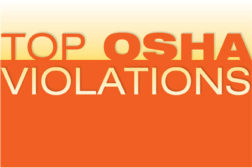Columns
State of the EHS Nation 2015 Survey
ISHN’s exclusive survey reveals healthy profession in ’15
January 5, 2015
Change how your firm reacts to failure
Tools to deal with human variability
January 5, 2015
Never miss the latest news and trends driving the safety industry
eNewsletter | Website | eMagazine
JOIN TODAYCopyright ©2024. All Rights Reserved BNP Media.
Design, CMS, Hosting & Web Development :: ePublishing














